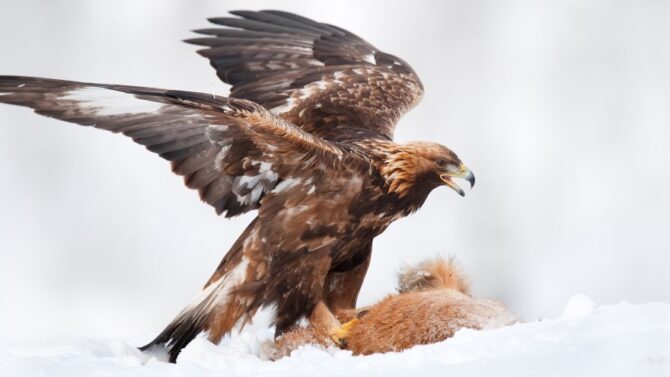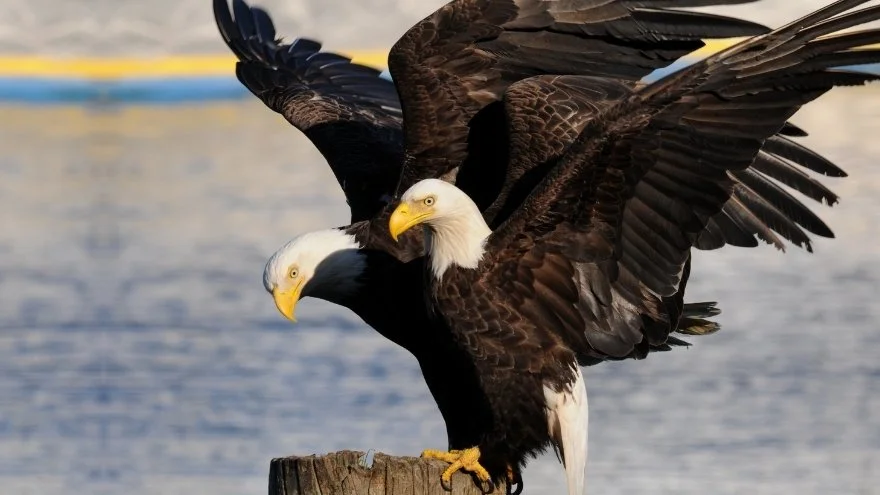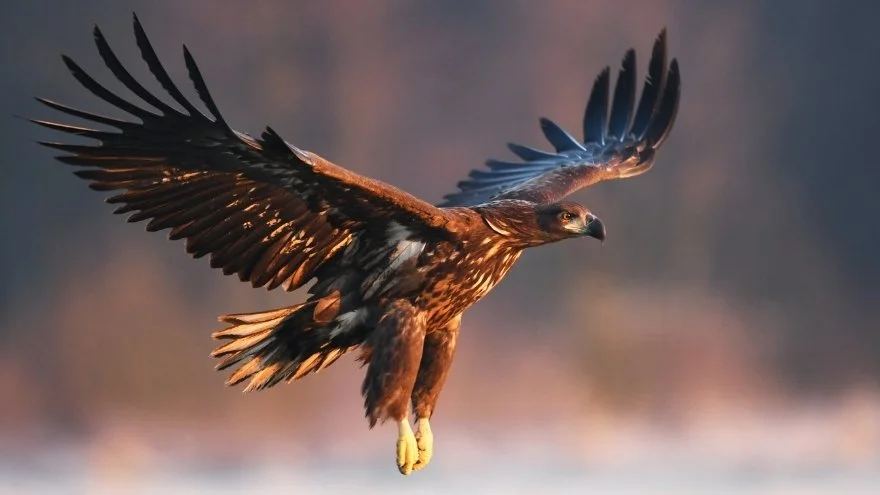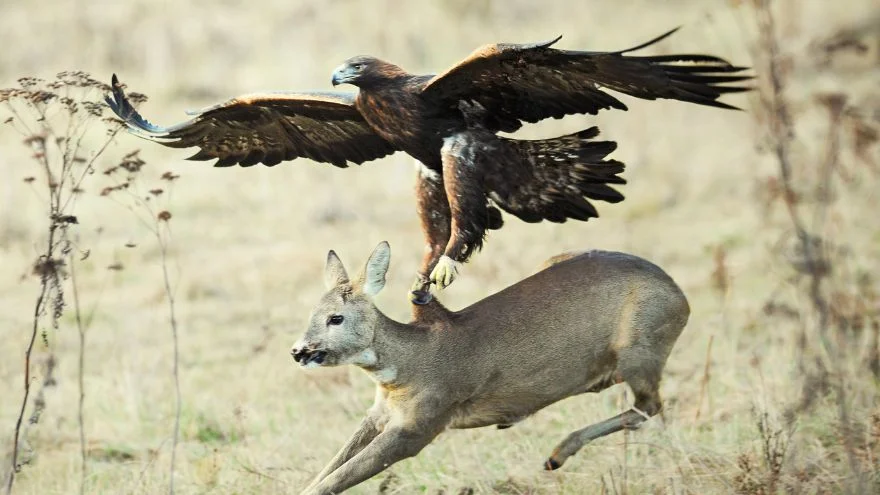Also known as the king of birds, eagles are powerful creatures gifted with speed and superior eyesight.
These special attributes added to their physical build make them apex predators and secure their place at the top of the food chain.
There are about 60 different species of eagles with different feeding habits, and one question often asked by many enthusiasts is: What do eagles eat in the wild?
Eagles are carnivorous animals and hunt other vertebrate animals such as fish, rodents, waterfowls, snakes, and even deer fawns.
They are considered opportunistic feeders and will consume living creatures and carrion.
In light of this, we’ll discuss their diet, hunting habits, and their place on the food chain.
Eagle Diet: What Do Eagles Eat?
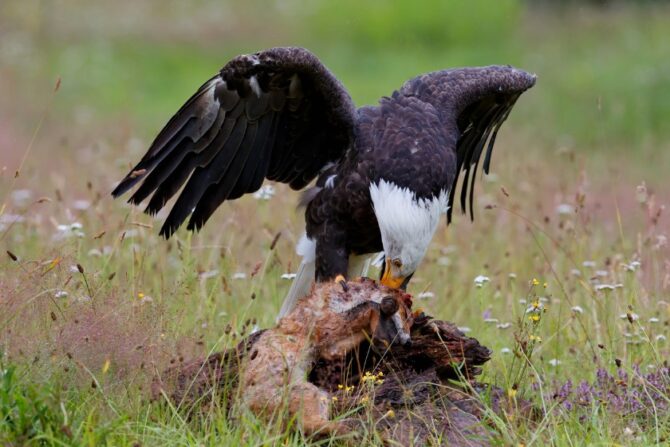
Firstly, eagles refer to big birds called raptors and are found everywhere in the world but in Antarctica.
Raptors hunt animals with larger physical proportions than themselves.
They are carnivorous predators and also opportunistic feeders.
Eagles hunt down animals that they can confidently target without harm to themselves.
Typically, they eat fish, amphibians, and other birds.
Eagles will also consume carrion (dead animals or even humans); you could say that they prefer it because there’s no risk involved and little to no energy expended.
However, some eagles have specific diet plans.
The bald eagle eats fish primarily (50% of its diet ), but it will also consume birds (25% of its diet) and mammals (rodents, baby deer).
The remaining 10% is comprised of lizards and snakes. The long-crested eagle’s diet is majorly composed of rodents.
What Do Baby Eagles Eat?
Before becoming a large bird of prey, every eagle was once a baby: this baby is called an eaglet.
Eaglets are fed raw meat from the moment they hatch. Unlike other birds, their parents do not regorge food for them.
Instead, they tear the food into little pieces and feed it to their chicks whole.
Initially, the father is primarily in charge of providing food for the eaglets.
The mother may join in the hunt for meals after seven days or so if food is not abundant.
Eaglets need to feed 1-8 times a day, with the biggest chick being prioritized.
This makes it much more probable that the little one will likely die as a hatchling while the bigger one will attain maturity.
How Do Eagles Hunt?
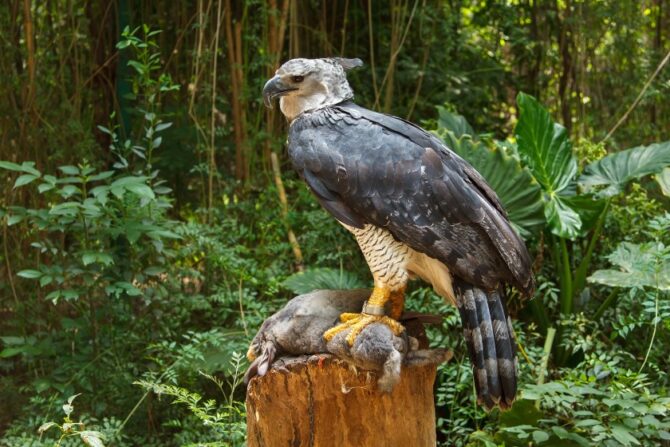
Eagles do not behave like common birds that feed on seeds and insects.
They are capable of traveling vast distances in the search of food and may migrate if food is scarce in their region.1
The flapping flight technique requires too much energy, so eagles have become masters of soaring flight.
By flying on twisting perpendicular coils of warm air called thermals, eagles have the capacity to travel twenty miles an hour with no effort required.
Eagles are heavily built, and this particular characteristic makes them capable of lifting animals that are a little bit heavier than them.
When the prey is too heavy for one eagle, a group of eagles can unite and tear the prey apart to pieces with their talons before moving it.
These raptors are well-versed in the art of silently snatching prey and sneak attacks.
Some particular strategies are commonly used by eagles on the hunt.
The choice of strategy depends on the milieu in which they find themselves and their target. Some of them are:
Aerial hunting
As soon as the eagle has its prey in its sights, it follows it discreetly while still in flight.
When it gets near the animal, it swoops down, stretches out its talons, snatches it, and flies away.
The force exerted by the eagle’s feet on this creature while snatching it often kills it.
In the process of diving, the eagle moves through the air at a normal speed of about 50km/h.
Picking off prey close to the ground
To hunt a bigger animal, eagles hover above the ground while in pursuit.
When they believe the time is ripe, they swoop in and launch an attack gripping their prey with their strong claws.
Hunting from afar
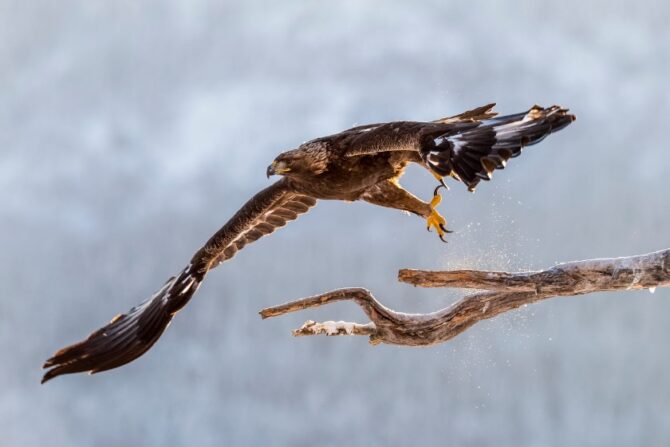
Eagles have excellent eyesight, so they take refuge in high places such as trees and mountains to observe their food options.
The moment their unsuspecting prey comes closer to their hideout, they launch themselves at it and attack.
How Often Does An Eagle Hunt?
Eagles are diurnal beasts of prey; this is to say that they hunt during the day.
Their eyesight is poor in the dark, so they avoid hunting at night.
They are early risers which makes them very much active at dawn. Eagles are also alert at dusk.
Eagles consume 8% to 12% of their body weight per day.
They do not need to hunt every day because one large prey is enough to keep them satisfied for days on end.
However, hunting is innate to them, so they might find themselves doing it more than is necessary.
Do Eagles Have Predators?
A chick or an immature eagle is susceptible to attack from other birds and animals, such as hawks, bears, wolves, and cougars.
You can learn more from this in-depth coverage of eagle predators.
An eagle that has attained maturity is an apex predator and can hardly be preyed upon.
However, human technologies have become a threat to these birds.
Eagles die by gunshot wounds, electrocution, collision with power lines and vehicles, and food poisoning.
Related Questions
Do eagles eat every day?
Eagles don’t need to eat every day. They have an inbuilt storage system in their bodies called the crop.
It is an expandable part of the esophagus that allows them to store about 2 pounds of food and softens it up.
How long can an eagle live without food?
Every animal experiences a period of plenty and a period when there is nothing. When meals are scarce, eagles can stay for up to a week without food.
After this period of no food, eagles will gorge themselves on their next meal. They’ll eat almost 1kg of food in a single sitting!
Wrap Up
In so many cultures, eagles are associated with strength, courage, leadership, and wisdom. This is because of all their physical attributes.
Eagles remain the most powerful bird currently in existence.
Their powerful claws, incredible strength, intelligence, and superior eyesight puts them far above other birds and guarantee their place at the top of the food chain.
References & Notes
- Migrating in the Fall? Journey North.
